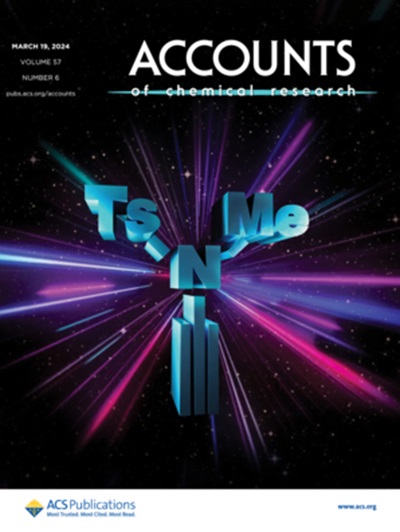ATR-SEIRAS for Single-Atom Electrocatalysis
IF 17.7
1区 化学
Q1 CHEMISTRY, MULTIDISCIPLINARY
引用次数: 0
Abstract
Single-atom catalysts (SACs) represent a revolutionary paradigm in heterogeneous catalysis and display exceptional atom utilization efficiency with well-defined active sites. These distinctive characteristics position SACs as pivotal materials for advancing electrochemical energy conversion and storage technologies. The active center atoms are typically anchored by coordination with oxygen (O), nitrogen (N), and other functional groups on the surface of the supports. When precisely anchored onto tailored supports, these isolated active centers offer considerable promise for enhanced catalytic activity and selectivity. Nevertheless, the inherent complexity of the multistep proton-coupled electron transfer processes in electrochemical energy conversion and storage systems presents major challenges for the mechanistic elucidation and rational design of catalytic architectures to optimize reaction kinetics. Recent advancements in in situ/operando characterizations, most notably attenuated total reflection–surface-enhanced infrared absorption spectroscopy (ATR–SEIRAS), have greatly stimulated SACs research. ATR–SEIRAS amplifies the vibrational signal at the interface, enabling real-time tracking of transient interfacial species at submonolayer concentrations. Moreover, it simultaneously captures the dynamic structural evolution of single-atom motifs during the catalytic cycles.

单原子电催化的ATR-SEIRAS
单原子催化剂(SACs)代表了多相催化的一种革命性范式,具有明确的活性位点,具有优异的原子利用效率。这些独特的特性使sac成为推进电化学能量转换和存储技术的关键材料。活性中心原子通常通过与氧(O)、氮(N)和支撑表面的其他官能团的配位来固定。当精确地固定在定制的支架上时,这些分离的活性中心提供了相当大的希望,以提高催化活性和选择性。然而,电化学能量转换和存储系统中多步质子耦合电子转移过程的内在复杂性为机理阐明和合理设计催化结构以优化反应动力学提出了重大挑战。最近在原位/operando表征方面的进展,尤其是衰减全反射-表面增强红外吸收光谱(ATR-SEIRAS),极大地促进了SACs的研究。ATR-SEIRAS可以放大界面处的振动信号,实现亚单层浓度下瞬态界面物质的实时跟踪。此外,它同时捕获了催化循环过程中单原子基序的动态结构演变。
本文章由计算机程序翻译,如有差异,请以英文原文为准。
求助全文
约1分钟内获得全文
求助全文
来源期刊

Accounts of Chemical Research
化学-化学综合
CiteScore
31.40
自引率
1.10%
发文量
312
审稿时长
2 months
期刊介绍:
Accounts of Chemical Research presents short, concise and critical articles offering easy-to-read overviews of basic research and applications in all areas of chemistry and biochemistry. These short reviews focus on research from the author’s own laboratory and are designed to teach the reader about a research project. In addition, Accounts of Chemical Research publishes commentaries that give an informed opinion on a current research problem. Special Issues online are devoted to a single topic of unusual activity and significance.
Accounts of Chemical Research replaces the traditional article abstract with an article "Conspectus." These entries synopsize the research affording the reader a closer look at the content and significance of an article. Through this provision of a more detailed description of the article contents, the Conspectus enhances the article's discoverability by search engines and the exposure for the research.
 求助内容:
求助内容: 应助结果提醒方式:
应助结果提醒方式:


